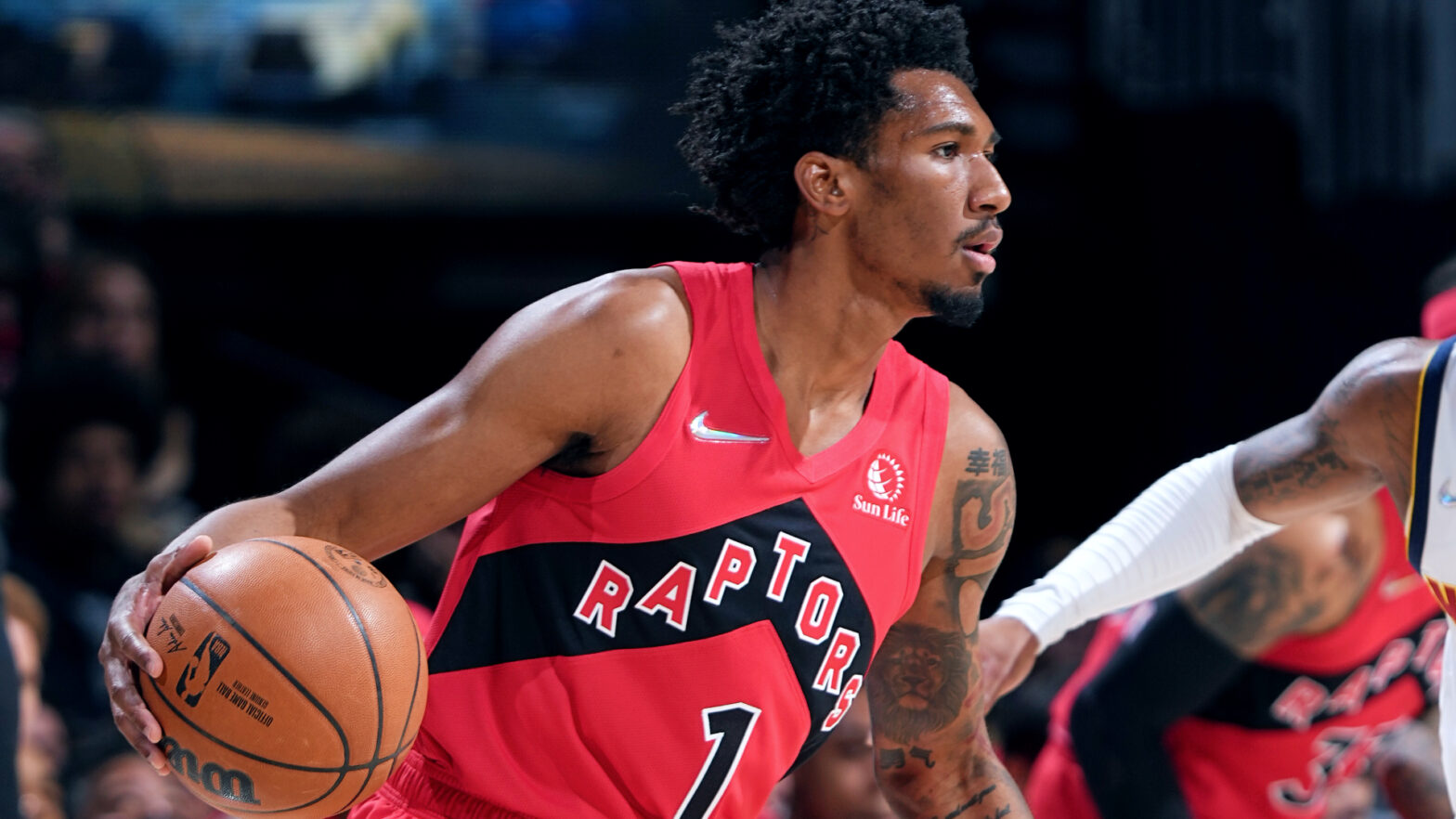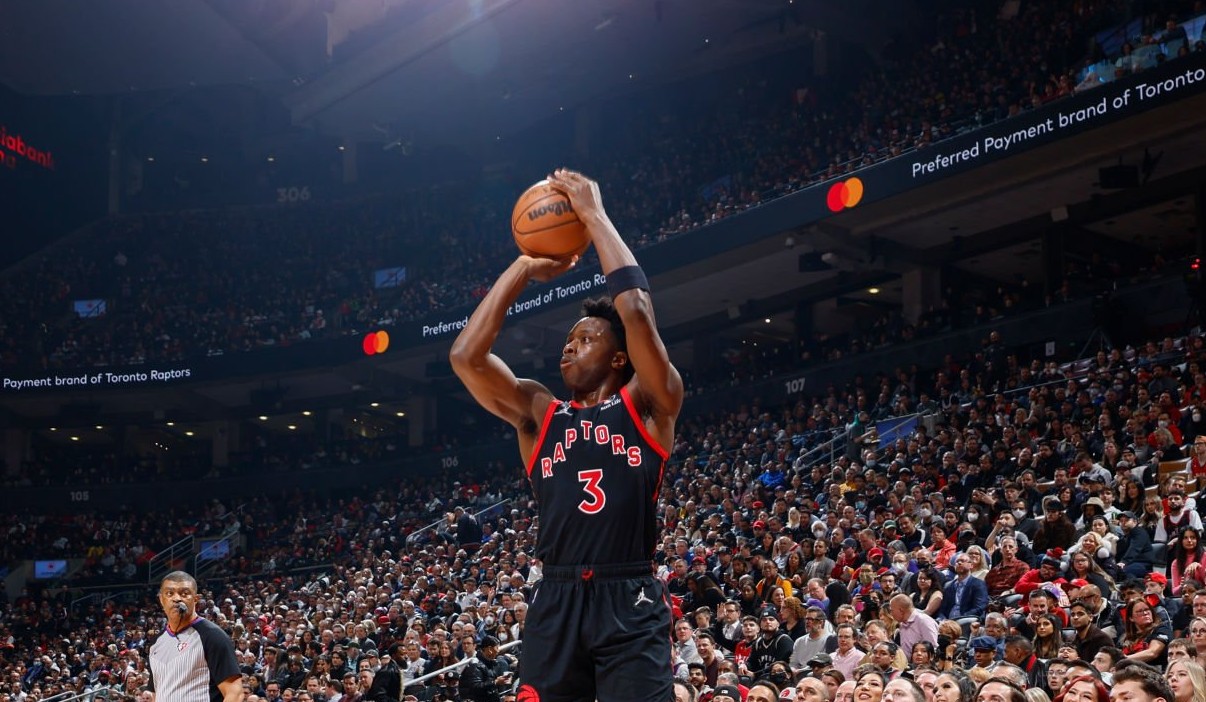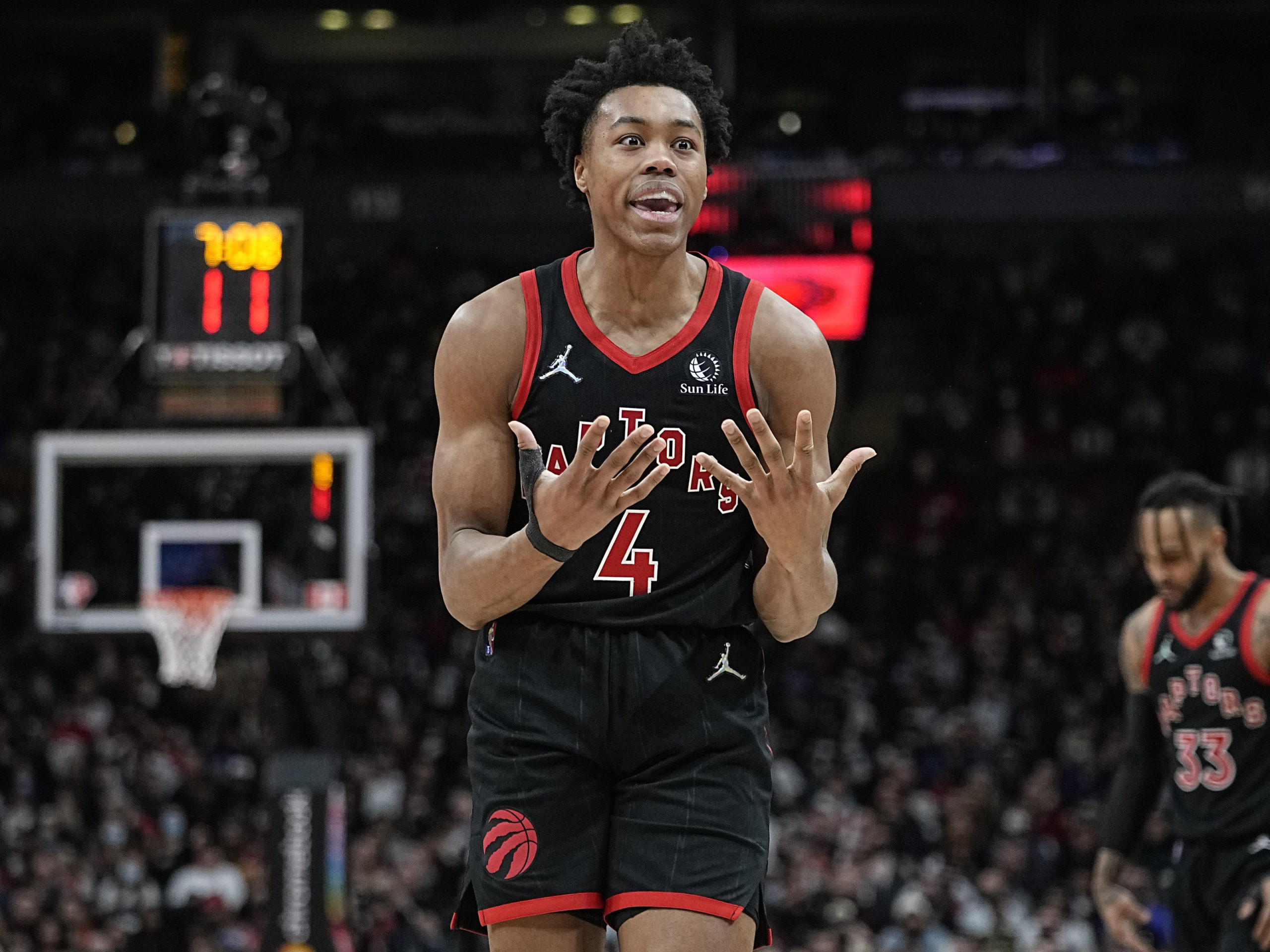Post-game / Quick Reaction / Raptors React x Rap Up
In the NBA, your first player off the bench is supposed to be a sparkplug initiator. In fact, since 2011-12 only one non-sparkplug initiator has won the Sixth Man of the Year award — Montrezl Harrell in 2019-20. To be more general, shooting guards have won the Sixth Man of the Year award every year but two since 2004-05. Well, the Toronto Raptors have two shooting guards on the roster, and one (Gary Trent jr.) starts when he’s healthy, and the other (Svi Mykhailiuk) doesn’t play.
The Raptors need to build their bench differently.
Against the Cleveland Cavaliers, the bench worked about as well as it’s going to. Toronto scored 43 points off the bench, outscoring Cleveland’s heralded and talented unit. The scoring came from diverse areas, both in terms of players and in terms of regions; Chris Boucher and Armoni Brooks combined for 23 points while hitting their triples, and Precious Achiuwa and Thaddeus Young combined for 18 points while living at the rim. For too long this season, the Raptors have struggled to get enough from their bench. Not against the Cavs.
Boucher is Toronto’s version of a sparkplug initiator, and like the the Raptors themselves, he’s unique. He’s the height of a big with the weight of and desire to play like a guard. The Raptors mostly force him to stick to his roots, crashing the offensive glass and cheating touches and buckets for himself that way. But he split the difference against Cleveland, stroking triples and even mixing in rim attacks in both the half-court and open court. He may not be a guard, but he’s definitely a sparkplug. The team’s texture changes when he hits the court. He’s been one of Toronto’s most consistent performers for the vast majority of the season, and he’s now first among rotations players in on-court net rating.
The two bench players who perhaps equaled Boucher, and certainly played their best games as Raptors, were Brooks and Young. Toronto’s defense is supposed to simulate calculus: hard to learn, full of complex rules to memorize, and have something to do with the difference between velocity and acceleration. Yet on his second 10-day contract with the Raptors, having played fewer than 80 total minutes as a Raptor, Brooks is already fitting in perfectly. He rotates to the precise spot without pausing to think, collects steals like old mushrooms collect mold, and contests everything in sight. His highlight against Cleveland was a chasedown block in transition — he may be a point guard by trade, but his wingspan is the ideal-for-the-Raptors six-foot-nine, so he’s comfortable leaping with the best of them. Plus, he may be Toronto’s best shooter off the bench — he hit two against Cleveland — and his reputation there earns Toronto some vital space.
“It’s the willingness to take the shot,” said Nick Nurse of the value of Brooks’ spacing. “The ball’s coming to him a lot and he turned down one he should have shot but other than that, he pretty much fires them. He’s a really good shooter. I know his percentages aren’t super good yet, but I think the threat of him being able to hit a few in a row is there, and that’s important, too.”
Young has often only found offensive success with Toronto when his jumper is falling. He has played the small forward in Toronto’s transitional lineups, letting Achiuwa and Boucher take the vast majority of on-ball screening reps. That’s a blatant misuse of his skills, but it’s how the team is constructed. Perhaps as a result, he has the worst offensive on/off net rating on the team (second percentile leaguewide, too). But with OG Anunoby back and spacing the floor, Young shifted to one of two bigs on the floor for a stretch alongside Boucher, and the Raptors used him in the pick-and-roll game alongside VanVleet. Twice in a row, VanVleet made an Iverson cut to the weak-side of the floor, and Young dashed after him to set an empty-corner pick and roll. Young shot four of six and dished his usual helping of dimes (two), as he was far more effective playing his usual role in the offense.
“Him and Freddy were playing pick and roll, and they were putting two on Freddy, and Freddy was rightly getting off the ball to Thad, and he was firing it somewhere or hitting a cutter or taking one and scoring on his own,” explained Nurse. “He just felt like a really safe pair of hands there. You take your chances if you take it out of Fred’s hands.”
Achiuwa has alternated between looking like a star and looking like an inexperienced 22 year old. That’s fine and normal — for an inexperienced 22 year old, especially — but it means sometimes he strokes triples and blows past other bigs off the bounce. In other games, as against Cleveland, he shoots inefficiently. But he still contributed to Toronto’s vice-grip defense. The rest of the bench picked up the scoring slack.
In the beginning of March, the Raptors enjoyed a dominant game from the bench through cutting. It looked nothing like Toronto’s dominant-from-the-bench game against the Cavs. This one featured more transition jank, pick-and-roll exploitation, and spot-up shooting. When teams employ a Lou Williams or Manu Ginobili or Eric Gordon or Jamal Crawford, bench scoring can look the same, night in and night out. Not so for these Raptors. Their bench scoring is going to come from different players and in different plays. Even the one player who can consistently score off the bench, Boucher, will do it in vastly different ways from one night to the next.
But the bench is starting to figure the whole thing out. It helps, of course, when Pascal Siakam puts up 35 points and rains fire from deep. That cracks the carcass open, letting the bench feast on the innards. But there’s an erratic consistency to the bench, a yo-yo that spins and rockets and dances unpredictably, but always stays in motion. The Raptors are a unique team playing basketball uniquely. Yet somehow we are starting to expect how that will manifest on the court. That comfortable familiarity is starting to extend to an area that has been a weakness for the Raptors: bench play.



